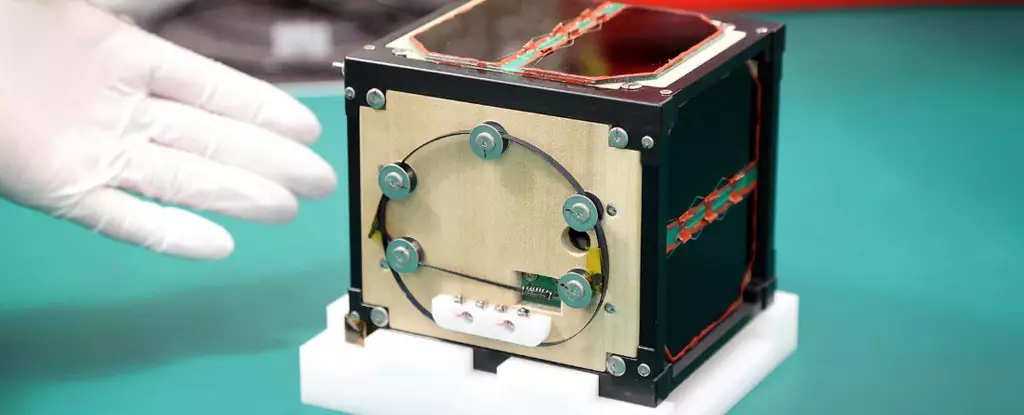In an impressive move towards sustainable space exploration, scientists at Kyoto University have successfully launched LignoSat, the world’s first wooden satellite. Part of a resupply mission to the International Space Station (ISS), this pioneering project aims to address the growing issue of space debris, specifically the metal particles produced when conventional satellites burn up upon re-entry into Earth’s atmosphere. This initiative not only highlights innovation in satellite technology but also emphasizes an essential shift towards environmentally responsible practices in space missions.
The decision to use wood as the primary material for LignoSat stems from concerns regarding the environmental impact of space debris. Metal particles resulting from the disintegration of traditional satellites can have adverse effects on both our planet and telecommunications systems. As such, the wooden design of LignoSat proposes a viable alternative, reducing the risk of contamination and potential hazards associated with metallic debris. The developers believe that the material’s natural properties might make it suitable for orbital missions, illustrating a radical departure from conventional materials that dominate satellite construction.
On a recent Tuesday, the LignoSat was deployed aboard a SpaceX rocket, launching from NASA’s Kennedy Space Center in Florida. The mission has been carefully orchestrated, with LignoSat measuring a compact 10 centimeters (roughly four inches) on each side, confirming that size does not necessarily correlate with innovation. According to statements from the Kyoto University’s Human Spaceology Center, the satellite was successfully placed into orbit and will be transferred to the ISS, where it awaits further testing and data collection. The successful deployment is a critical step for its anticipated release into space, scheduled for approximately a month after its arrival at the ISS.
Once released, LignoSat’s primary objectives will involve assessing its structural integrity and performance under varying temperatures and conditions common in space. Researchers are keenly interested in gathering data on how well the wooden satellite endures these extremes, thereby providing valuable insights into the feasibility of longer-term, non-metal satellite missions. Takao Doi, an astronaut and lead researcher on the project, has expressed optimism over the project’s potential to pave the way for future non-metal satellites, demonstrating a hopeful outlook towards more sustainable practices in space exploration.
The launch of LignoSat is not merely a technical achievement but a significant forward leap in the quest for sustainable space exploration. As space missions grow in frequency, addressing the challenge of debris becomes increasingly vital. The innovative use of wood as a satellite material may well symbolize a transformative phase in aerospace engineering. The tools and technologies utilized today will profoundly impact how future generations explore and interact with outer space, ensuring that such endeavors are conducted with an eye toward environmental stewardship. This project could lay the groundwork for a new norm, wherein eco-friendly materials become standard in the design and launch of satellites, ushering in a new era of sustainable space technology.


Leave a Reply